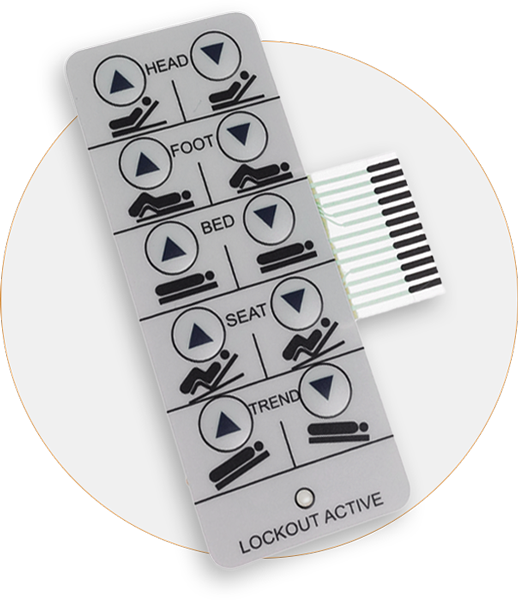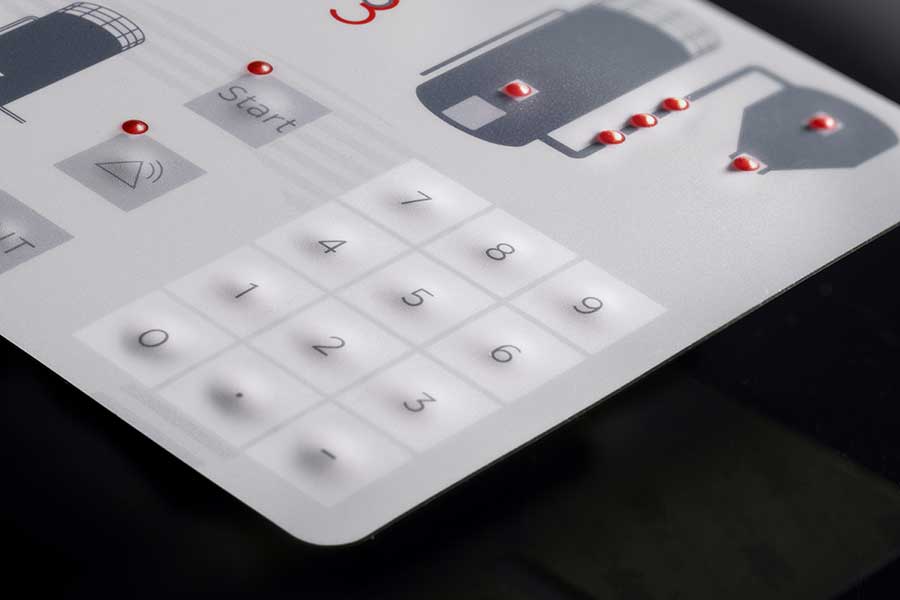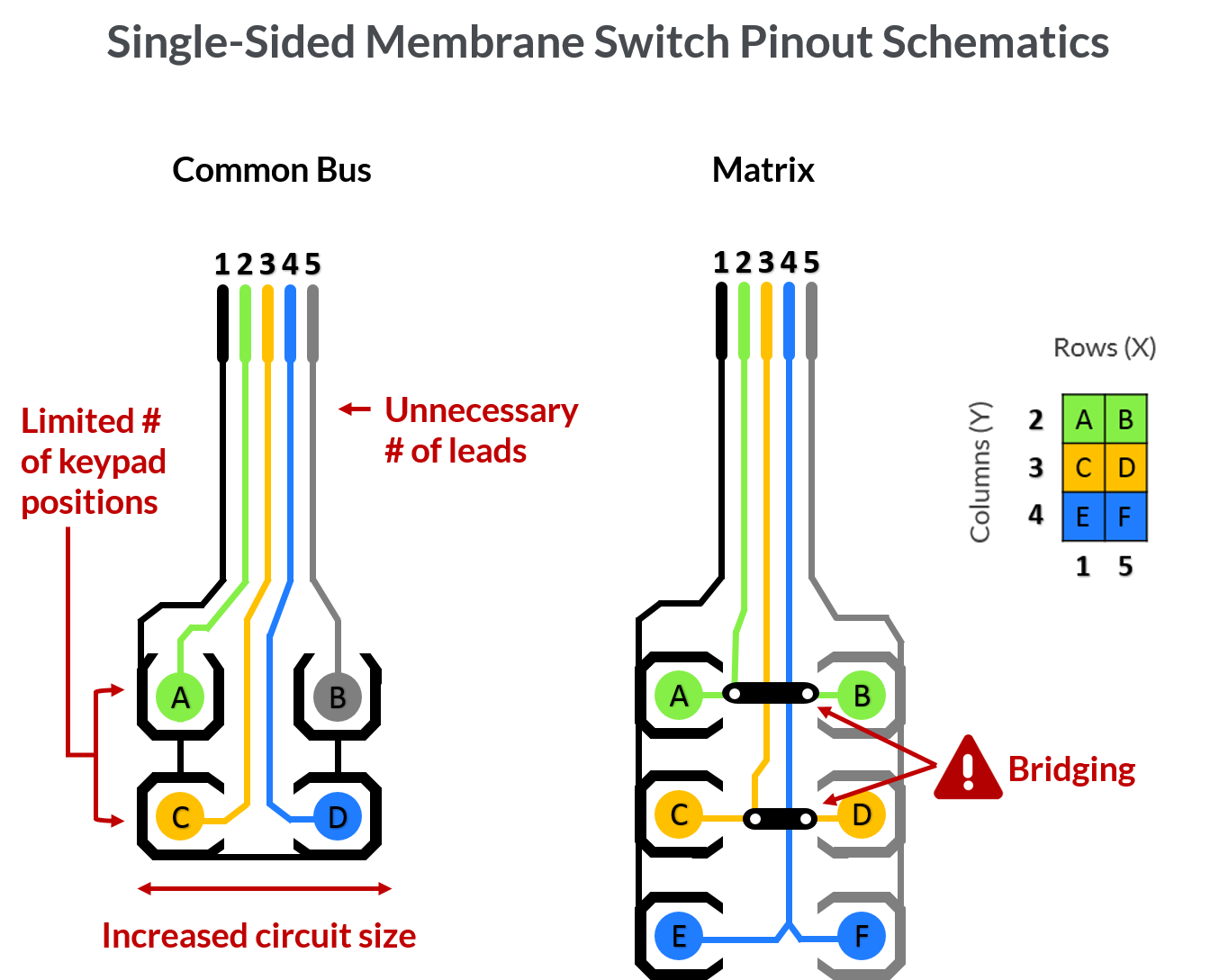How a Membrane Switch Enhances Individual Experience and Gadget Effectiveness
How a Membrane Switch Enhances Individual Experience and Gadget Effectiveness
Blog Article
Recognizing the Capability of Membrane Layer Switches for Interface Gadget
The capability of membrane switches over stands for a considerable advancement in customer interface design, combining effectiveness with visual adaptability. As markets increasingly prioritize user experience, comprehending the nuances of membrane layer switch innovation ends up being essential.
What Are Membrane Layer Buttons?
Membrane layer buttons are innovative user interface tools that facilitate individual interaction with electronic equipment. These versatile components include multiple layers, including a visuals overlay, spacer, and a published circuit layer. The style enables a smooth assimilation into different electronic gadgets, improving both the visual and functional elements of user interfaces.
Membrane layer buttons are commonly employed in a large range of applications, from house home appliances to industrial machinery and medical tools. Their building normally includes a thin profile, making them a suitable option for small designs. The responsive responses supplied by these switches can be crafted to satisfy particular user choices, making certain reliable communication in between the user and the tool.
Toughness is another significant benefit of membrane buttons, as they are immune to dirt, wetness, and chemicals, which enhances their lifespan sought after environments. In addition, these buttons can be tailored in regards to shape, size, and visuals layout, enabling branding and user-specific attributes. Overall, membrane layer changes represent a sensible service for enhancing customer experience in digital devices, integrating functionality with visual appeal in a reliable fashion.
How Membrane Layer Switches Over Work
Operating on an uncomplicated principle, membrane layer switches utilize a split construction to sign up customer input successfully. Each button contains several layers, consisting of a published circuit layer, a spacer layer, and a leading visuals layer, which are developed to collaborate flawlessly. When an individual presses the top layer, it presses the spacer layer, bringing the conductive aspects of the circuit layer into call with each various other.
This contact produces a shut circuit, signaling the gadget to implement a particular feature. The style enables numerous arrangements, including tactile comments, which can boost the user experience by giving a physical sensation upon activation. The materials utilized in membrane layer switches typically consist of adaptable substratums, such as polyester or polycarbonate, which guarantee toughness and strength versus wear and tear.

Trick Benefits of Membrane Switches

An additional considerable advantage is their density. Membrane buttons are slim and light-weight, which enables suppliers to conserve area in their devices without giving up performance. This attribute is especially advantageous in applications where weight and quantity are critical factors to consider.
Additionally, membrane layer switches are immune to dust, dampness, and chemicals, enhancing their sturdiness. This strength prolongs their life-span and minimizes the demand for constant replacements, causing expense financial savings over time.
In addition, the tactile comments offered by membrane layer switches can be enhanced to boost customer communication. They can include attributes such as raised buttons or audible clicks, enhancing usability and individual experience.
Applications Throughout Industries
User interface gadgets making use of membrane layer switches prevail in a vast array of markets, showcasing their flexibility and capability. Membrane Switch. In the clinical market, membrane layer buttons are integral to devices such as analysis tools and client surveillance systems, where their resilience and simplicity of cleaning are vital for keeping hygiene standards. In the automobile market, these site switches are utilized in dashboard controls and infotainment systems, offering a streamlined and modern interface for users.
Moreover, the consumer electronics sector benefits from membrane buttons in devices and handheld tools, where compact style and easy to use user interfaces boost individual experience. Industrial applications likewise utilize membrane layer switches for control panels in machinery and automation systems, highlighting their robustness and resistance to harsh atmospheres.
In the aerospace and defense markets, membrane layer buttons are utilized in cabin controls news and tools, where dependability and efficiency under severe conditions are critical. Additionally, the pc gaming sector progressively incorporates membrane buttons in controllers and game devices, adding to an engaging customer experience. Generally, the adaptability of membrane layer switches enables their prevalent use across numerous industries, highlighting their value in contemporary interface design.
Future Patterns in Membrane Switch Over Innovation

In addition, using sophisticated products, such as polycarbonate and polyester movies, is expected to increase, giving improved longevity and resistance to ecological stressors. These products add to the general long life of membrane layer buttons, making them suitable for harsher industrial applications.
Moreover, the consolidation of clever innovation, including IoT connectivity, will certainly make it possible for membrane layer switches to interact with other tools and systems, facilitating an extra interactive customer experience. This pattern aligns with the growing need for wise gadgets throughout click to find out more numerous industries, from medical care to consumer electronic devices.
Lastly, modification choices are anticipated to expand, enabling suppliers to develop bespoke options customized to specific customer demands and choices. These developments will certainly position membrane layer switches as essential elements in the development of interface innovation.
Conclusion
In conclusion, membrane layer changes represent a pivotal improvement in user interface modern technology, providing a reliable and flexible remedy for diverse electronic applications. As advancements in material scientific research and touch sensing technologies proceed, the capability and applicability of membrane buttons are expected to broaden, enhancing their importance in modern electronic gadgets.
Report this page